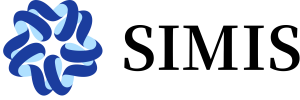Donaldson-Thomas and Gromov-Witten theories
The study of the moduli spaces of algebraic curves and coherent sheaves, and their induced invariants over ambient complex kahler varieties of complex dimension 2, 3 and higher, has been a central source of focus for mathematicians in the past 50 years, due to their profound connections to geometry, topology, number theory as well as fruitful contributions to superstring theory. The course aims at introducing these topics and provides discussion of computations of Gromov-Witten and Donaldson-Thomas invariants of complex algebraic varieties.
讲师
日期
2023年03月02日 至 07月13日
位置
| Weekday | Time | Venue | Online | ID | Password |
|---|---|---|---|---|---|
| 周二,周四 | 09:00 - 10:30 | A3-1-101 | ZOOM 08 | 787 662 9899 | BIMSA |
课程大纲
Part 1: GW invariants
1.1 Stable curves
1.2 Families and moduli spaces of smooth and stale pointed curves
1.3 Gromov-Witten classes
1.4 Gromov-Witten invariant
1.5 Virtualfundamentalclasses
1.6 Formal construction of virtual fundamental class
1.7 Behrend-Pantechi Construction of virtual fundamental class
1.8 Computation of virtual fundamental class in some examples
1.9 Propertiesof GW classes
1.10 Tree-level classes and invariants
1.11 Small quantum cohomology
1.12 Further properties of small quantum product
1.13 Small quantum cohomology of CY manifolds
Part 2: Donaldson-Thomas theory and sheaf theory
2.1 IdealsheavesandDonaldson-Thomastheory
2.2 Deformationtheory
2.3 Primaryinvariants
2.4 Correspondence bewteen DT invariants and GW invariants
2.5 Virtual localizationin DT theory
2.6 Some examples of Torus equivariant localization of DT, for C3 and local P1
2.7 Relative DT Theory(JunLi, BaoseauWu)
2.8 Torsion DT theories and modular forms
Part 3: Physics behind study of torsion sheaves
3.1 Partition function of solutions to SYM theory
3.2 Modularity of torsion sheaf DT theory for K3-fibered 3folds
Part 4: Vafa-Witten theory over algebraic projective surfaces
4.1 Vafa-Witten invariants
4.2 Fixed loci of torsion sheaf moduli space, i.e., C∗-equivariant torsion sheaves
Part 5 4 dimensional DT theories
5.1 Calabi-Yau 4folds and Kapustin-Witten invariants
5.2 Atiyah class
5.3 Universal truncated relative Atiyah class.
5.4 Categorical DT theory for local surfaces
5.5 Work of Yukinobu Toda
5.6 Singular support of coherent sheaves
1.1 Stable curves
1.2 Families and moduli spaces of smooth and stale pointed curves
1.3 Gromov-Witten classes
1.4 Gromov-Witten invariant
1.5 Virtualfundamentalclasses
1.6 Formal construction of virtual fundamental class
1.7 Behrend-Pantechi Construction of virtual fundamental class
1.8 Computation of virtual fundamental class in some examples
1.9 Propertiesof GW classes
1.10 Tree-level classes and invariants
1.11 Small quantum cohomology
1.12 Further properties of small quantum product
1.13 Small quantum cohomology of CY manifolds
Part 2: Donaldson-Thomas theory and sheaf theory
2.1 IdealsheavesandDonaldson-Thomastheory
2.2 Deformationtheory
2.3 Primaryinvariants
2.4 Correspondence bewteen DT invariants and GW invariants
2.5 Virtual localizationin DT theory
2.6 Some examples of Torus equivariant localization of DT, for C3 and local P1
2.7 Relative DT Theory(JunLi, BaoseauWu)
2.8 Torsion DT theories and modular forms
Part 3: Physics behind study of torsion sheaves
3.1 Partition function of solutions to SYM theory
3.2 Modularity of torsion sheaf DT theory for K3-fibered 3folds
Part 4: Vafa-Witten theory over algebraic projective surfaces
4.1 Vafa-Witten invariants
4.2 Fixed loci of torsion sheaf moduli space, i.e., C∗-equivariant torsion sheaves
Part 5 4 dimensional DT theories
5.1 Calabi-Yau 4folds and Kapustin-Witten invariants
5.2 Atiyah class
5.3 Universal truncated relative Atiyah class.
5.4 Categorical DT theory for local surfaces
5.5 Work of Yukinobu Toda
5.6 Singular support of coherent sheaves
听众
Graduate
视频公开
公开
笔记公开
不公开
语言
英文
讲师介绍
Artan Sheshmani主要研究方向为代数几何、 微分几何和弦理论的数学方面。他于2022年加入BIMSA任研究员一职,曾任哈佛大学数学科学及其应用研究所(CMSA)西门斯同调镜像对称合作项目资深成员(教授),及美国哈弗-麻省理工人工智能和基本交互作用研究所成员。
2020年至2023年期间,他在美国迈阿密大学美国数学科学研究所担任访问教授一职,并参与了关于“霍奇理论及其应用”的研究合作项目。2020-2022年,他在哈佛大学物理系担任访问教授。2016-2022年,他在丹麦奥胡斯大学数学学院(原量子几何与模空间中心)担任副教授。
他的主要研究方向集中在Gromov Witten理论、Donaldson Thomas理论、Calabi-Yau几何以及弦理论的数学方面。他研究在Calabi Yau空间上的束和曲线的模空间的几何学,其中部分工作在研究弦理论理论的数学方面起到重要作用。在他的研究中,他致力于理解在复变化的各个维度上的这些模空间的几何对偶性,并目前正在从导出几何和几何表示理论的角度拓展这些项目。
2020年至2023年期间,他在美国迈阿密大学美国数学科学研究所担任访问教授一职,并参与了关于“霍奇理论及其应用”的研究合作项目。2020-2022年,他在哈佛大学物理系担任访问教授。2016-2022年,他在丹麦奥胡斯大学数学学院(原量子几何与模空间中心)担任副教授。
他的主要研究方向集中在Gromov Witten理论、Donaldson Thomas理论、Calabi-Yau几何以及弦理论的数学方面。他研究在Calabi Yau空间上的束和曲线的模空间的几何学,其中部分工作在研究弦理论理论的数学方面起到重要作用。在他的研究中,他致力于理解在复变化的各个维度上的这些模空间的几何对偶性,并目前正在从导出几何和几何表示理论的角度拓展这些项目。




